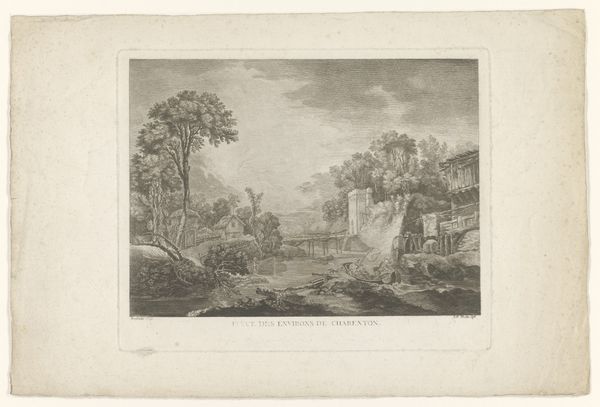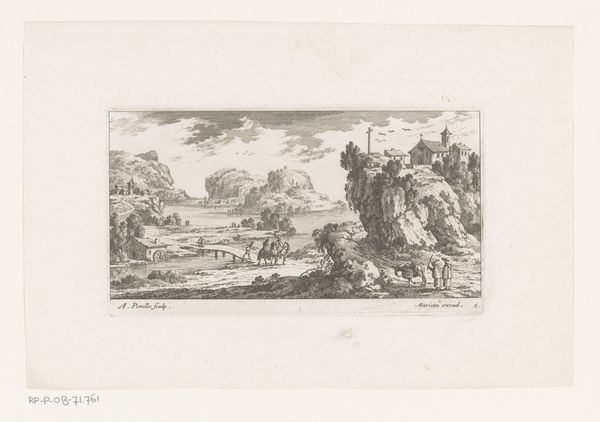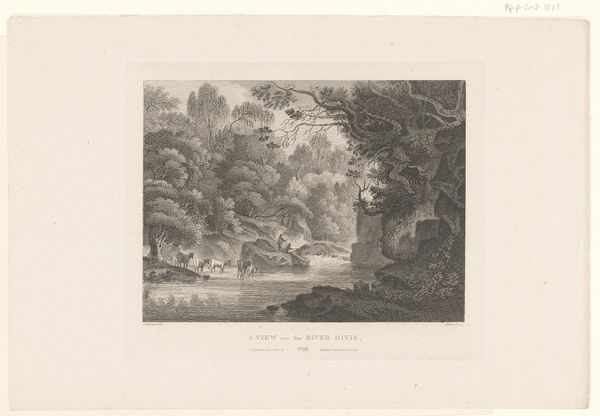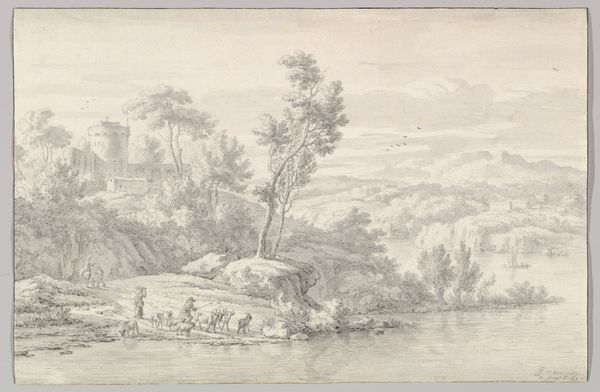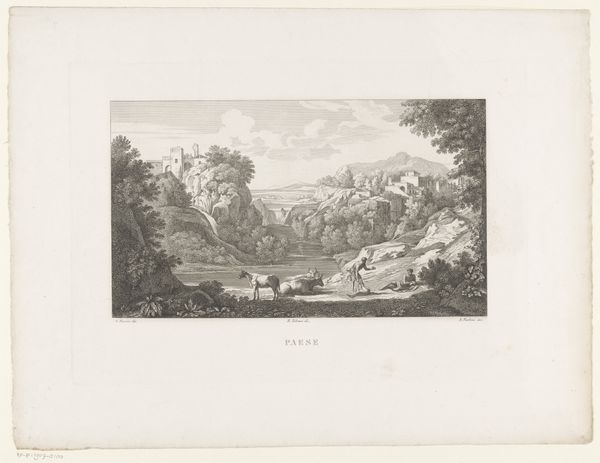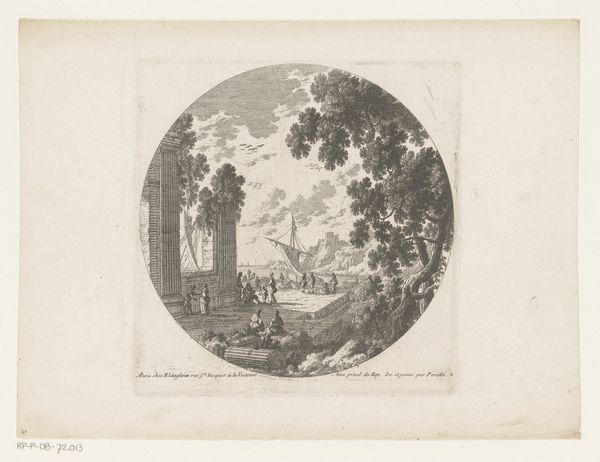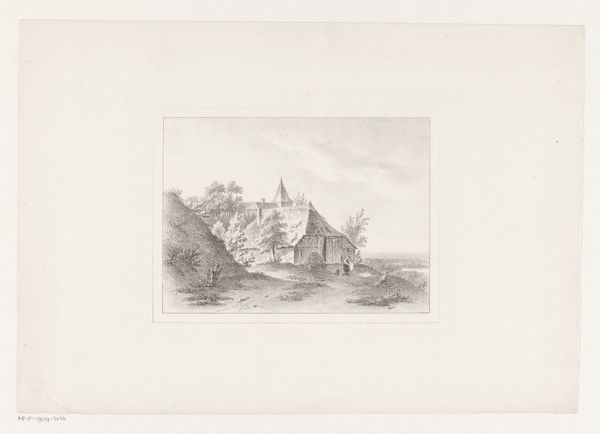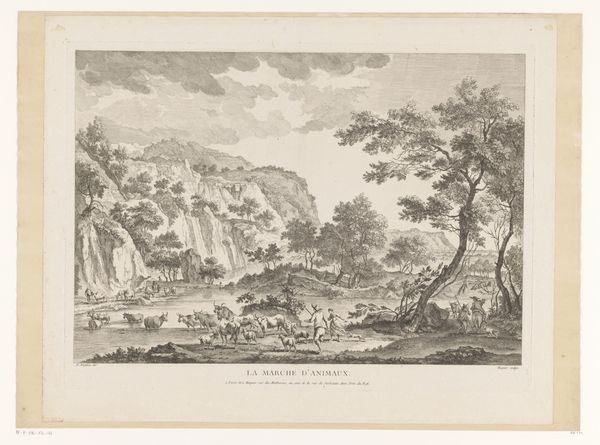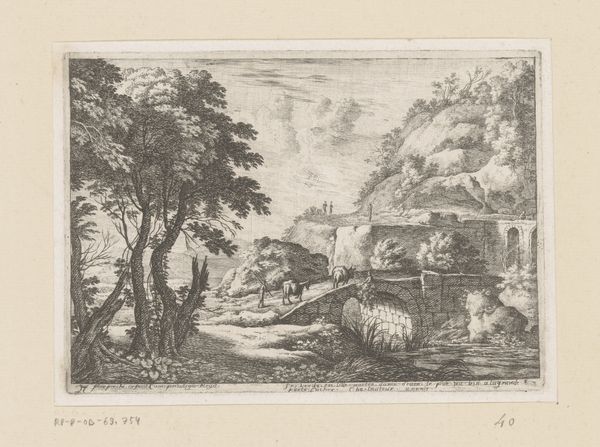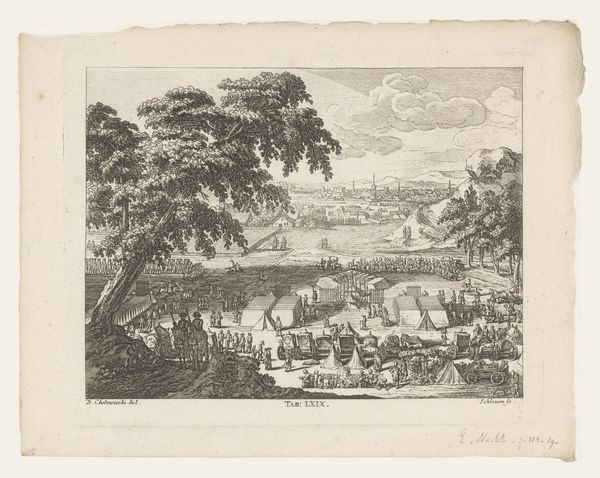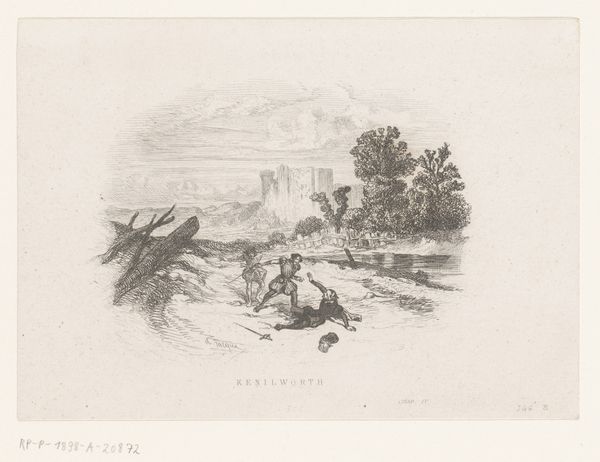
# print
#
landscape
#
romanticism
Dimensions: height 185 mm, width 282 mm
Copyright: Rijks Museum: Open Domain
Curator: This is "View of the Watermill of Saint-Chély-d'Aubrac," a print by François Gebhardt, created sometime between 1837 and 1855. Editor: It has such a placid, serene feel. The water looks cool and inviting. I immediately think of lazy summer days. Curator: The artist used a meticulous printing process to achieve that effect. Think about the labor involved in creating all those subtle gradations of light and shadow. This was skilled craftsmanship, a process accessible to a wider audience. Prints made art more democratic, allowing views like this one to be shared and consumed. Editor: It does represent a specific kind of accessibility, doesn't it? Note how it romanticizes the rural landscape. This was at a time of huge social and economic upheaval with industrialisation well underway. This idyllic scene serves as a visual counterpoint to the realities faced by many, doesn't it? Class and gender also figure prominently, especially if you think about the depiction of leisure here and who has access to it. Curator: I see your point about romanticisation. But consider the impact the depiction of industry could have at that time. The print serves as documentation, if not celebration, of human alteration of the natural world. The mill itself, constructed for a purpose, stands as testament to labour and production. Editor: Perhaps... But looking at it, the watermill appears almost picturesque. Think about the historical context, the role of women in such rural communities, for instance. This view obscures more complex and layered realities. Even its aesthetic charm plays a political role, reinforcing existing power structures, though seemingly benignly. Curator: Perhaps we give it too much credit as propaganda? Is it not just documentation using skilled artistic execution to disseminate these picturesque scenes? Editor: That’s an interesting proposition. Either way, thanks to prints like these we're now having these conversations. Curator: Exactly, thank you.
Comments
No comments
Be the first to comment and join the conversation on the ultimate creative platform.
